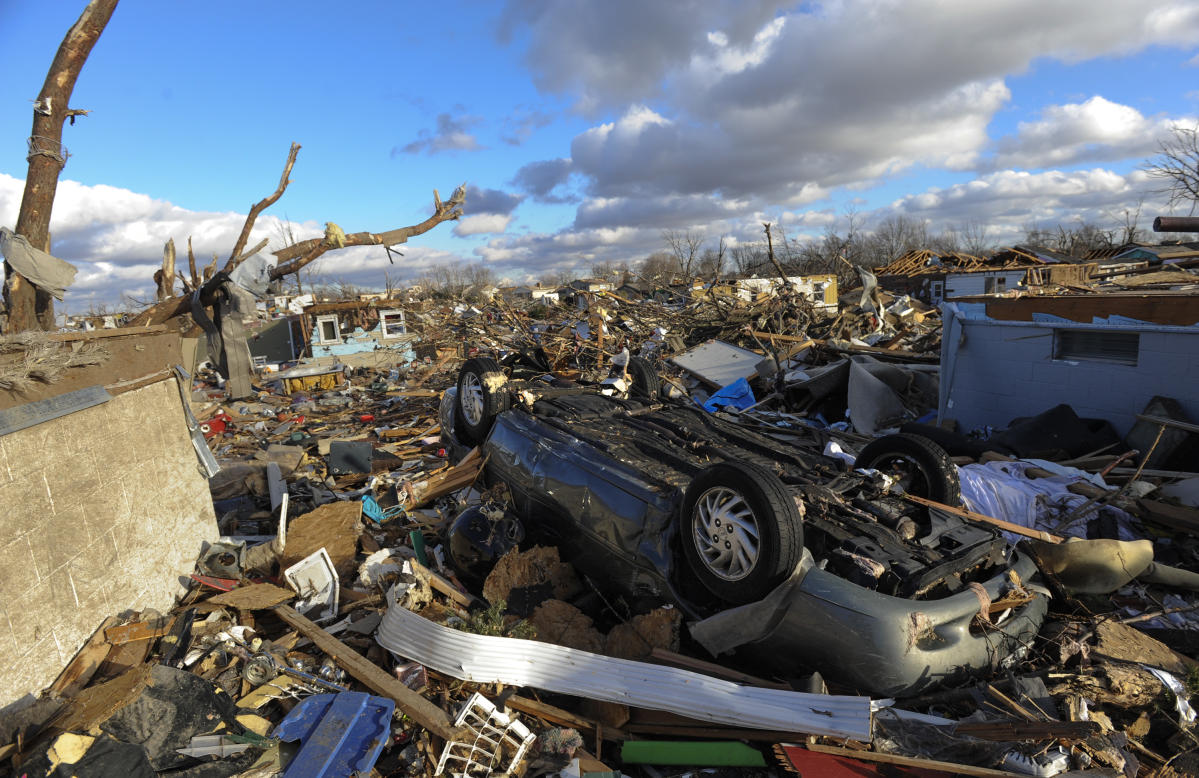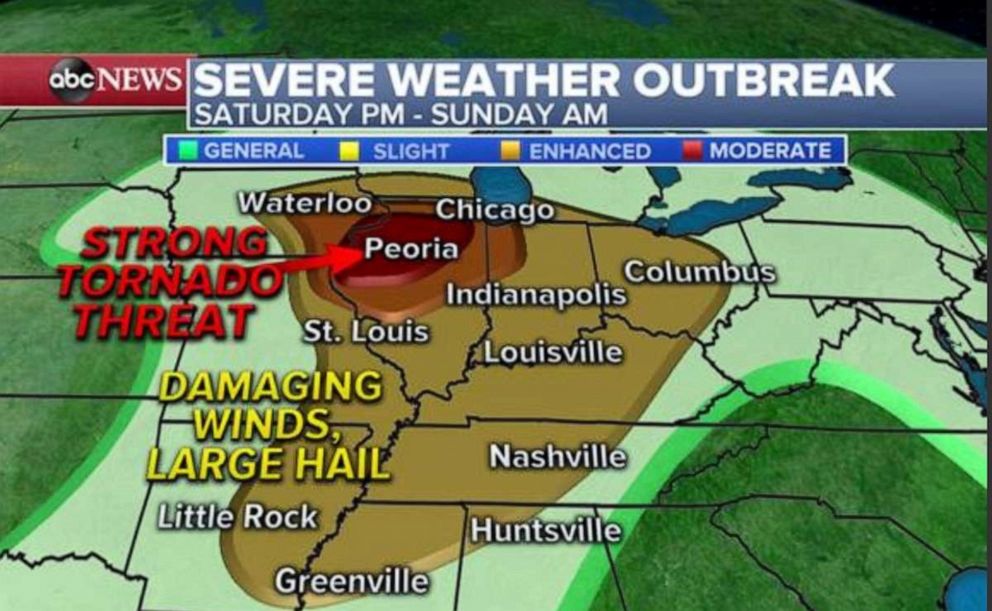Understanding And Preparing For Tornadoes In Peoria
The Peoria tornado ranks among the most impactful natural disasters in Illinois, drawing national attention and leaving a profound mark on local communities. This article explores the origins, consequences, and preventive measures for tornadoes in Peoria, offering essential guidance for residents to manage future emergencies effectively. By understanding the science of tornadoes and adhering to safety protocols, lives can be saved during severe weather events.
Peoria, Illinois, has long been prone to severe weather, but recent tornadoes have presented unprecedented challenges. These powerful storms are not only destructive but also unpredictable, making preparation critical. This article will delve into the historical context of tornadoes in Peoria, their causes, and actionable steps individuals and communities can take to mitigate damage and enhance safety.
Whether you're a long-time resident or a newcomer to Peoria, grasping the risks associated with tornadoes is vital. By staying well-informed and adequately prepared, you can safeguard yourself, your family, and your property. This comprehensive guide will equip you with the necessary knowledge to navigate the complexities of tornadoes and their impact on the community.
Read also:Exploring The Masterpiece The 2025 Best Picture Winner
Table of Contents
- Exploring the Peoria Tornado
- Historical Overview of Tornadoes in Peoria
- Factors Leading to Tornadoes
- Impact of Tornadoes on Peoria
- Essential Safety Measures During a Tornado
- Understanding Tornado Warning Systems
- Preparation Strategies for Tornadoes
- Rebuilding and Recovery After a Tornado
- Tornado Statistics for Peoria
- Conclusion and Next Steps
Exploring the Peoria Tornado
Tornadoes are a significant concern for Peoria residents, forming when warm, humid air from the Gulf of Mexico meets cooler, drier air from Canada, creating unstable atmospheric conditions. These severe thunderstorms often result in tornadoes that cause extensive destruction and loss of life. In recent years, Peoria has faced several tornadoes, some of which have severely impacted homes, businesses, and infrastructure.
Understanding the contributing factors to these storms is crucial for devising effective response strategies. This section will provide an overview of tornado basics and their impact on the community, emphasizing the importance of preparedness.
Historical Overview of Tornadoes in Peoria
Peoria has a storied history of tornado activity, marked by several significant events over the years. One of the most notable tornadoes occurred in 1990, devastating the city's west side. Classified as an EF3, this tornado destroyed over 300 homes and caused millions in damages.
Notable Tornado Events
- 1990 Peoria Tornado: EF3, causing $50 million in damages
- 2013 Washington Tornado: Nearby EF4 tornado leading to widespread destruction
- 2017 Peoria Tornado: EF1 tornado causing minor damage in several neighborhoods
These historical events underscore the necessity of preparedness and community response in mitigating tornado impacts. By learning from past occurrences, residents can better understand the risks and develop strategies to protect themselves and their property.
Factors Leading to Tornadoes
Tornadoes result from a combination of atmospheric conditions that create instability in weather systems. The interaction between warm, moist air from the Gulf of Mexico and cooler, drier air from Canada can lead to thunderstorms that spawn tornadoes. This section will examine the specific conditions contributing to tornado development in Peoria.
Key Factors in Tornado Formation
- Temperature differences between warm and cold air masses
- High humidity levels
- Strong wind shear
- Low-level jet streams
Understanding these factors is critical for predicting tornadoes and issuing timely warnings. Meteorologists utilize advanced technology and data analysis to monitor weather patterns, identifying potential tornado threats and ensuring public safety.
Read also:James Van Der Beeks Resilient Journey Battling Cancer And Inspiring Millions
Impact of Tornadoes on Peoria
Tornadoes can wreak havoc on Peoria, affecting both the physical landscape and the lives of its residents. Beyond property damage, tornadoes can cause injuries and fatalities, disrupt essential services, and pose long-term economic challenges for the community.
Recovery efforts typically involve collaboration between local government agencies, emergency responders, and community organizations to provide support and resources to affected residents. This section will analyze the short- and long-term effects of tornadoes on Peoria and its residents, emphasizing the importance of community resilience.
Essential Safety Measures During a Tornado
Knowing how to act during a tornado is vital for ensuring personal safety and reducing injuries. Residents should develop a comprehensive emergency plan that includes identifying safe shelter locations, assembling emergency supplies, and staying informed about weather conditions.
Steps to Take During a Tornado
- Seek shelter in a basement or interior room on the lowest floor
- Avoid windows and exterior walls
- Protect your head and neck with pillows or blankets
- Stay away from heavy furniture or appliances
By following these safety measures, residents can significantly reduce the risk of injury during a tornado, enhancing their chances of survival.
Understanding Tornado Warning Systems
Effective warning systems are indispensable for providing residents with timely information about impending tornado threats. In Peoria, the National Weather Service (NWS) issues tornado watches and warnings based on radar data and storm reports from trained spotters. These alerts are communicated through various channels, including television, radio, and mobile apps.
Residents should familiarize themselves with the different types of tornado alerts and know how to respond to each one. This section will provide an overview of the warning systems in place in Peoria and their role in enhancing public safety.
Preparation Strategies for Tornadoes
Preparation is key to surviving a tornado and minimizing its impact on your life. Residents should take proactive steps to secure their homes, assemble emergency supplies, and develop a family communication plan. This section will offer practical tips for preparing for tornadoes and ensuring your safety during severe weather events.
Emergency Preparedness Checklist
- Create an emergency kit with food, water, and essential supplies
- Develop a family communication plan
- Secure loose outdoor items and reinforce windows
- Stay informed about weather conditions through reliable sources
By taking these proactive measures, residents can enhance their resilience during tornado events, reducing the potential for damage and injury.
Rebuilding and Recovery After a Tornado
Recovering from a tornado can be a lengthy and challenging process. Residents must collaborate with local authorities and community organizations to rebuild homes and restore essential services. This section will explore the recovery process in Peoria, highlighting the importance of community support during this difficult period.
Reconstruction efforts often involve cooperation between government agencies, insurance companies, and nonprofit organizations to provide financial assistance and resources to affected residents. By working together, communities can recover more efficiently and emerge stronger from the experience.
Tornado Statistics for Peoria
Data and statistics are crucial for understanding the frequency and severity of tornadoes in Peoria. According to the National Oceanic and Atmospheric Administration (NOAA), Peoria experiences an average of three tornadoes per year, with the majority occurring during the spring and summer months.
Key Statistics
- Average number of tornadoes per year: 3
- Most common months for tornadoes: April to June
- Highest recorded tornado intensity: EF3
These statistics emphasize the importance of preparedness and community response in mitigating the effects of tornadoes. By analyzing data and trends, meteorologists can improve their ability to predict and respond to tornado threats.
Conclusion and Next Steps
In summary, understanding the causes, effects, and safety measures related to Peoria tornadoes is essential for ensuring personal safety and community resilience. By staying informed and prepared, residents can minimize the risk of injury and damage during severe weather events.
We encourage readers to take action by assembling emergency kits, developing family communication plans, and staying informed about weather conditions. Additionally, we invite you to share this article with others and explore related content on our website for more information on tornado preparedness and safety.


